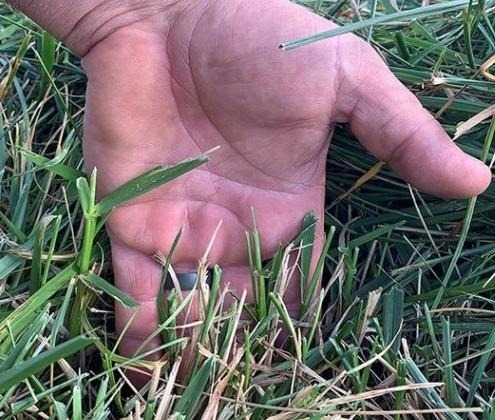Consider a 1 ton yield (40# small bales and 667 pound large square bales)
Small bales – mow $20, rake $10, bale $62.5 (1.25 x 50) = $92/acre to harvest not including handling
Large Squares - mow $20, rake $10, bale $36 (3 x 12) = $66/acre to harvest not including handling
Consider a 1/2 ton yield (40# small bales and 667 pound large square bales)
Small bales - mow $20, rake $10, bale $31 (1.25 x 25) = $61 /acre to harvest not including handling
Large Squares mow $20, rake $10, bale $18 (1.5 x 12) = $48/acre to harvest not including handling

Good mowing height. Photo: Andrew Frankenfield
Fertility Considerations
One ton of grass hay removes 50 units of nitrogen, 15 units of phosphorus, 50 units of potassium from the soil. If you fertilized for a ton or 1.5 tons of hay and you harvest only half of that there will still be some residual fertility remaining for the next cutting. Take that into account when you fertilize for your next cutting. Fertilizer prices have come down some in the past couple months, but it still isn’t cheap. Applying fertilizer to a hay field that has mostly gone dormant due to drought is probably not a good idea. At this time, it is best to plan how much fertilizer you will apply when the rains return and apply that once we see the weather pattern change that brings more frequent rainfall.
Grass is very responsive to rainfall; we still have an opportunity for decent cutting in September if the rains return in August. Don't lose hope. It will rain again before too long and the grass will regrow.
Source : psu.edu